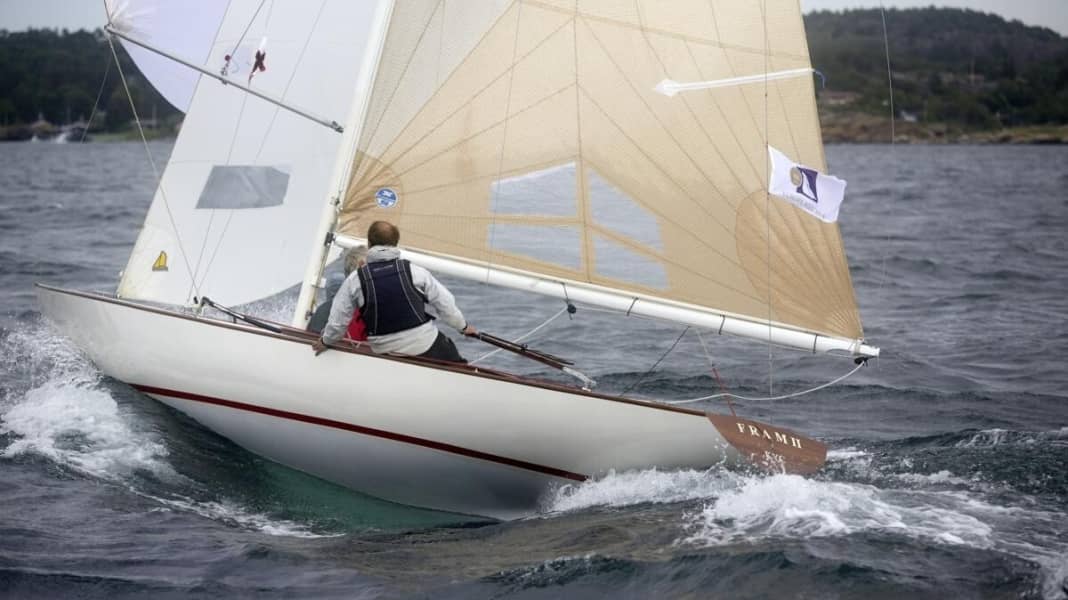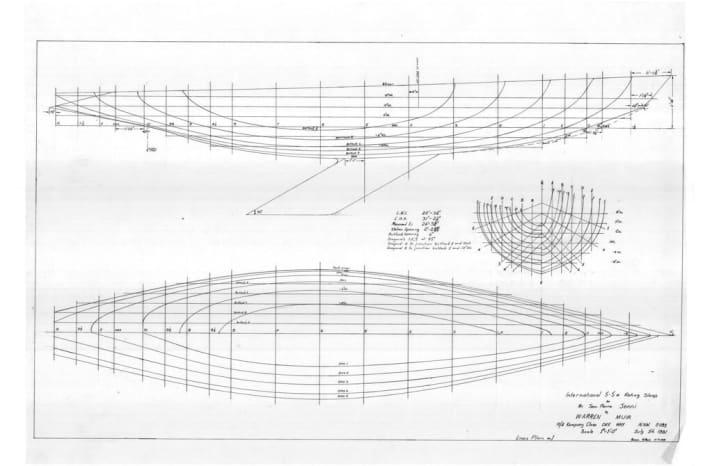
All the major cities in northern Germany are on the programme, starting with Hamburg and Berlin this year, followed by Kiel and Lübeck next year.
Dates
15.11.2017 North German Regatta Association (NRV) Hamburg
12.1.2018 Association Seglerhaus am Wannsee (VSaW) Berlin
31.1.2018 Hamburg Sailing Club (HSC) Hamburg
Exciting development
The ongoing development of the 70-year-old design class is shown - when an international arena for sailing was to be created again after the Second World War, it was necessary to find a replacement for the 6-mR yachts. The comparatively high costs for new builds in this class were no longer in keeping with the times.
British designer and metre-class specialist Charles E. Nicholson quickly modified the International Rule for this project. The new boat was around half as light and therefore had half as much sail area.
The 5.5 made its Olympic debut at the 1952 Games in Helsinki. At the 1972 Olympics in Kiel, the 5.5 then suffered the same fate for similar reasons: It was replaced by the open keelboats Soling and Tempest.
Open to innovations
But the loss of its Olympic honours has not harmed the 5.5er. The dimensions of the 5.5s - the boats are around 9.50 metres long, weigh between 1.7 and 2 tonnes and have just under 30 square metres of sail area on the wind - make them as uncomplicated to sail as kites or lacustres. In contrast to most other open keelboats of their size, however, they are a true construction class. And with regulations that are very open to innovation.
In the seventies, the first boats moulded using the vacuum process appeared. GRP is authorised at the beginning of the eighties. Self-draining cockpits are designed early on, and keel and rudder moulds reflect the current state of yacht development. Today, carbon rigs are just as common as ingenious trim tabs behind the keel of modern boats with a split lateral plan.
More than 700 boats
The international class association currently counts more than 700 boats in over 30 countries. In Germany, the German "5.5m KV" was re-established at the end of the nineties. There are also numerous local fleets. The most recent was founded in Kiel in November 2013, where the first German boat was based in 1952. In terms of numbers, 5.5s are most strongly represented in Germany today, with most newbuilds traditionally being launched in Switzerland.
The fleet is divided into three age groups. Classic wooden long keelers are called "Classic"; the design years 1970 to 1993 form the group called "Evolution"; younger boats are called "Modern". Despite all the differences, the boats start and sail together, with special prizes being awarded for Evolution and Classic.

Test sailing for everyone
The public relations work of the class association also includes a practical part in the summer. For several years now, a trial sailing event has been organised for everyone. Click here for the date of the next opportunity to get to know us.
